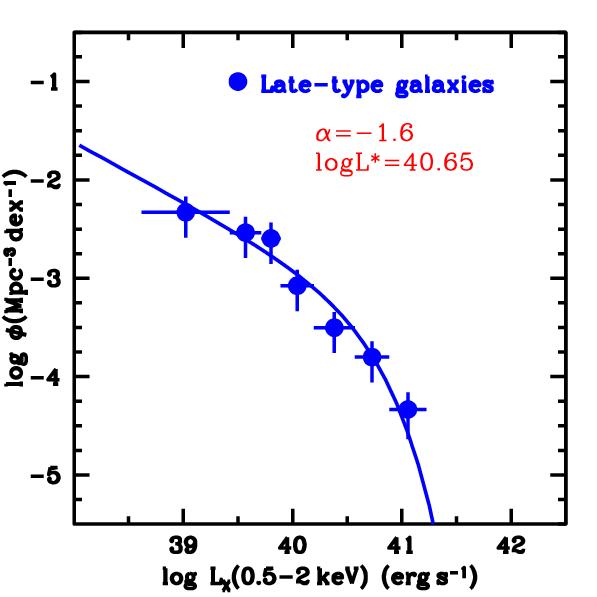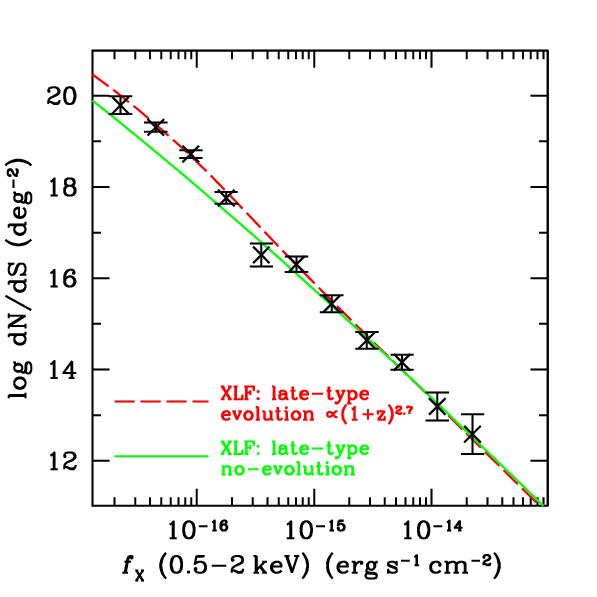| |
|
|
|
|---|
| |
|---|
| Research: the evolution of normal galaxies at X-ray wavelengths |
| |
 |
 |
|---|---|
|
Left: The X-ray luminosity function for late-type galaxies at z~0.1. This is estimated using data from an ongoing serendipitous survey that identifies normal galaxies on public XMM-Newton and Chandra fields (look below for details). Right: X-ray source counts for late-type galaxies combining the deepest pencil beam surveys currently available with our wide-angle shallow serendipitous sample. Comparison with models that assume different rates of evolution for the low-z X-ray luminosity function on the left are also plotted. These suggest evolution for the spiral population of the form ~(1+z)3. |
|
|
Until recently, our knowledge on the X-ray properties of `normal' galaxies (i.e. those dominated by emission of stellar origin) was essentially confined to the local Universe only (about 30Mpc) via targeted observations of a few X-ray bright systems. This situation changed drastically with the advent of the XMM-Newton and Chandra missions. These sensitive X-ray observatories provided, for the first time, X-ray selected normal galaxy samples at cosmologically interesting redshifts (z=0.1-1). This development opened the way to X-ray evolution studies of the dominant population in the Universe: normal galaxies. In this respect the X-ray wavelengths are a unique diagnostic, providing information complementary to other wavebands (e.g. optical, IR). They are the only tool available to directly probe the hot gas and the X-ray binary population in galaxies and to explore how these components evolve with redshift. To address this issue however, one requires a wide redshift baseline and therefore a combination of deep pencil-beam samples (probing high-z systems) and wide-angle shallow surveys to provide an anchor point at low-z. Although deep samples are available (e.g. Chandra-Deep Fields), there is a pressing need for a complete low-z sample. We are in the processes of addressing this issue by identifying galaxies using:
The surveys above cover about 15deg2 and probe galaxies at z~0.1. Using this unique sample we have estimated, for the first time, the X-ray luminosity function of early and late-type galaxies separately at z~0.1 (see figure above; Georgantopoulos et al. 2005; Georgakakis et al. 2006). We have further combined our serendipitous wide-angle shallow samples with the Chandra pencil-beam ultra-deep fields (e.g. Alexander et al. 2003), probing galaxies out z~1, to construct the X-ray source counts and to constrain the X-ray evolution of spirals and ellipticals separately. We find that the former evolve as ~(1+z)3 to z~1 while the latter show no evolution to these redshifts (see figure; Georgakakis et al. 2006). |
|---|
| |
|
|
|
|---|